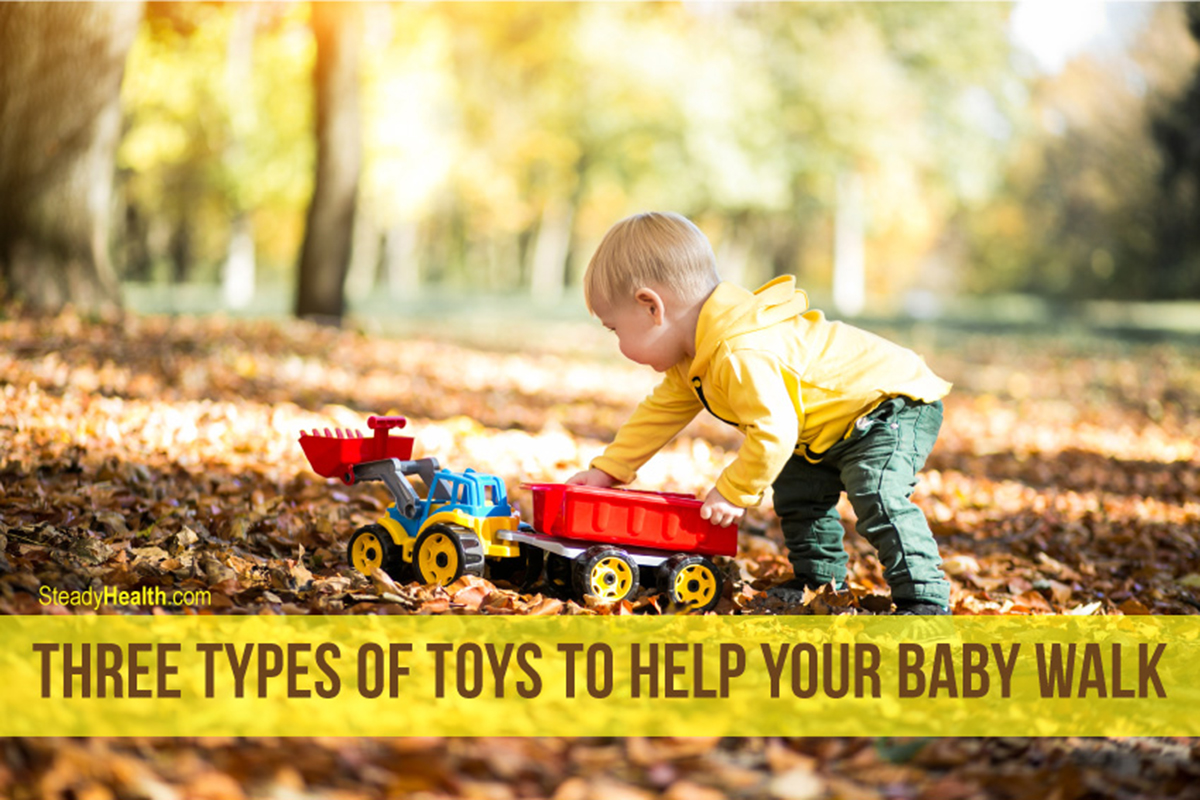Push and pull toys are great if you have a child that has already learned how to pull herself up into a standing position and move around the furniture. They can help your little one to become sturdier and improve her balance, but when it comes to the time your baby will start walking — toys can't speed up the process.
Toys that are specifically designed to improve walking skills in children perfectly combine imagination and physical movement, thus creating amazing play times without interfering with your child's growth rhythms. These toys are must-haves, at least in our house, as they seem to do so much for our little girl. She's currently in love with her push car, “driving” it more than she actually pushes, but it still counts. Push and pull toys help develop the toddler's large muscles and help to turn slow walkers into runners. [1]

Studies have found that active children tend to grow up into active and smart adults [2, 3], so it's important to encourage them to move around as soon as they're physically ready. Just avoid using a baby walker as they're proven dangerous. What you can try are different stationary activity centers, or push and pull toys, as they're safer alternatives to walkers. [4, 5]
Stationary activity centers
In recent years, there was a decrease in baby walker-related injuries presumably because of the decrease in their use, and the popularization of safer alternatives such as stationary activity centers. [5]
We never owned one, but according to manufacturers, exsersaucers are safe to use as soon as the child can sit up unassisted. I would wait a few months though, just to be on the safe side.
Push toys that are useful when learning to walk
Children learn by imitating parents and caregivers, so any toy that resembles what you do around the house will motivate them to move around. Children start showing interest in what adults do around the house when they're about 12 months old. Some push toys that mimic parents' behaviors such as vacuum cleaner toys, brooms, strollers, cars, or even wheelbarrows are interesting to them to push around because, well, their role models do it too. The majority of children enjoy their push toys most when they’re around 15 months of age.
The role of pull toys in your child's life
Pull toys should come a few months after push toys, when the child is around 18 months of age, already walks well and has the ability to pull something such as a wooden animal pet. Pushing toys around is easier than pulling them, but the child will probably perfect both skills between her first and second birthday.
It can be hard and frustrating for a child to look back all the time to check the toy, to yank the cord, and to keep balance at the same time. Your little one has to be steady with her steps first before she can walk around pulling something. Pull toys are generally designed for kids between one and two years of age, but if she's just started walking independently, it’s best to wait a couple of months before purchasing her first pull toy. [6]
Choose safe toys
Each year, more than two thousand button batteries are swallowed by children in the U. S. alone. It’s not that strange; many toys come with button batteries and their shiny appearance is interesting to small children. Swallowing can cause lifelong injuries, and even death if the battery is not removed on time. The same is true for high-powered magnet sets. [7]
Thousands of children are hurt by baby walkers and different toys as well [8]. If you must use a baby walker for some reason, find a model that adheres to the mandatory standards. Regarding toys, pick as many natural materials such as wood or rubber as possible. Avoid storing toys inside toy boxes as injuries and deaths have been reported due to lids falling onto children. Children under two years of age are at highest risk of getting trapped inside toy boxes.
Don't worry too much about when the baby will start walking independently, or what toy is the best to help him in the process. Just offer your child a safe environment with plenty of physical activity, love, and encouragement. Remember that each child develops at his own pace. As long as he’s safe and happy, it doesn't matter if he's 10 or 15 months old when he starts walking. Just be there to catch him if he falls.
- Photo courtesy of SteadyHealth.com


Your thoughts on this